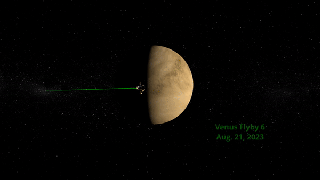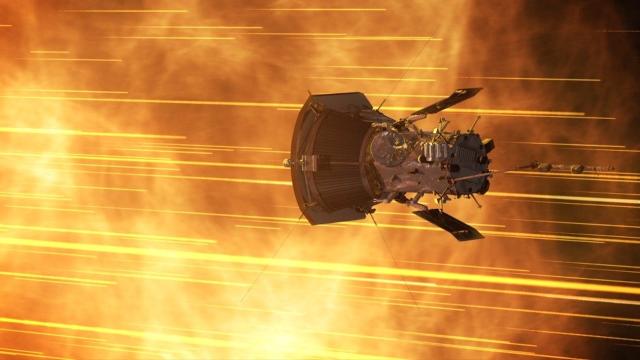NASA’s groundbreaking Parker Solar Probe continues to set new milestones, diving continuously deeper towards the Sun, and offering insights into the star’s enigmatic atmosphere and how it affects space weather.
On Wednesday, September 27, NASA’s Parker Solar Probe smashed its own record by approaching the Sun at a mere distance of 4.51 million miles (7.26 million kilometres), according to a NASA press release. This 17th close approach, or perihelion, occurred at 7:28 p.m. ET, marking the midpoint of a solar encounter that spans from September 22 to October 3. Aided by a gravity boost from Venus this past August, the probe reached staggering speeds of 394,736 mph (635,266 km/hr), solidifying its status as the fastest human-made object relative to the Sun.

Since its launch in August 2018, the Parker Solar Probe has been on a record-breaking spree. It blew past the 1976 record set by the Helios 2 spacecraft, establishing Parker as the closest human-made object to the Sun in history, and by consequence, making Pink Floyd exceptionally proud. Additionally, the probe has distinguished itself as the first spacecraft to traverse through the Sun’s outer atmosphere, the corona, making the British prog rockers even prouder.
Designed with a cutting-edge heat shield, the probe’s mission is to study the Sun’s corona and gather pivotal data. The overarching aim is to demystify the Sun’s structure, its enigmatic corona, and the origins of the solar wind. And to also uncover and explore the unknowns. Such knowledge is critically important, given that solar processes can influence space weather, posing threats to satellites, communication networks, and even Earth’s power grids.
In early September, Parker flew through one of the most intense coronal mass ejections (CMEs) ever observed. This event validated a theory two decades in the making—the notion that CMEs, colossal solar eruptions, interact with interplanetary dust, in a finding with key implications for space weather forecasting.
NASA says that, despite the probe’s proximity to the Sun, it continues to be in good health. The spacecraft is slated to transmit status data to the Johns Hopkins Applied Physics Laboratory in Maryland on October 1, and then beam back science data, predominantly about the solar wind, further aiding researchers in their pursuit to better understand the Sun’s complicated dynamics.
